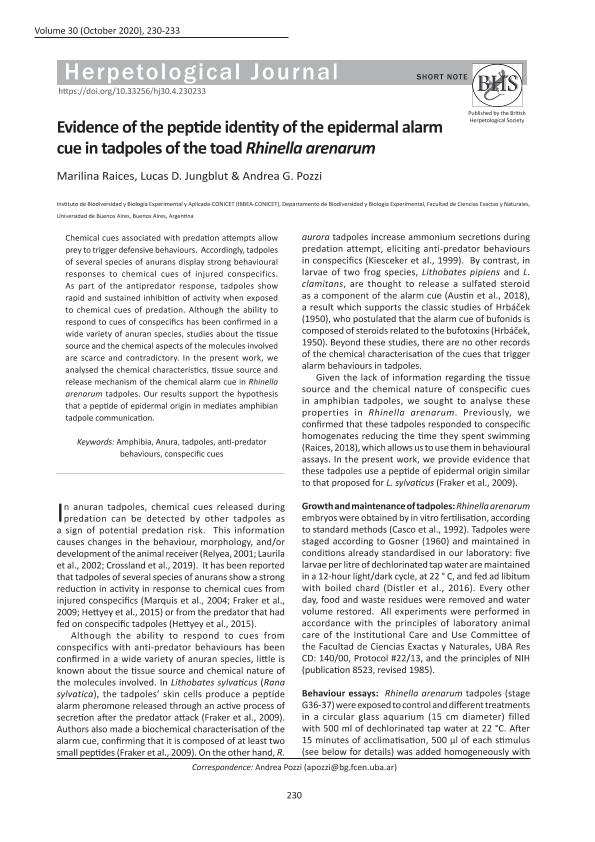Artículo
Evidence of the peptide identity of the epidermal alarm cue in tadpoles of the toad rhinella arenarum
Fecha de publicación:
08/2020
Editorial:
British Herpetological Society
Revista:
Herpetological Journal
ISSN:
0268-0130
Idioma:
Inglés
Tipo de recurso:
Artículo publicado
Clasificación temática:
Resumen
Chemical cues associated with predation attempts allow prey to trigger defensive behaviours. Accordingly, tadpoles of several species of anurans display strong behavioural responses to chemical cues of injured conspecifics. As part of the antipredator response, tadpoles show rapid and sustained inhibition of activity when exposed to chemical cues of predation. Although the ability to respond to cues of conspecifics has been confirmed in a wide variety of anuran species, studies about the tissue source and the chemical aspects of the molecules involved are scarce and contradictory. In the present work, we analysed the chemical characteristics, tissue source and release mechanism of the chemical alarm cue in Rhinella arenarum tadpoles. Our results support the hypothesis that a peptide of epidermal origin in mediates amphibian tadpole communication.
Palabras clave:
AMPHIBIA
,
ANTI-PREDATOR BEHAVIOURS
,
ANURA
,
CONSPECIFIC CUES
,
TADPOLES
Archivos asociados
Licencia
Identificadores
Colecciones
Articulos(IBBEA)
Articulos de INSTITUTO DE BIODIVERSIDAD Y BIOLOGIA EXPERIMENTAL Y APLICADA
Articulos de INSTITUTO DE BIODIVERSIDAD Y BIOLOGIA EXPERIMENTAL Y APLICADA
Citación
Raices, Marilina; Jungblut, Lucas David; Pozzi, Andrea Gabriela; Evidence of the peptide identity of the epidermal alarm cue in tadpoles of the toad rhinella arenarum; British Herpetological Society; Herpetological Journal; 30; 4; 8-2020; 230-233
Compartir
Altmétricas




